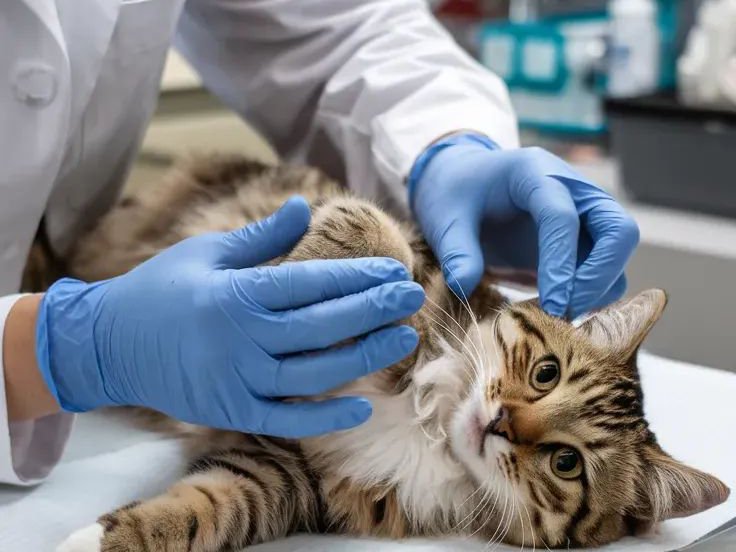Vaccinations are a vital part of keeping cats healthy, protecting them against deadly diseases like rabies, feline leukemia virus (FeLV), and panleukopenia. However, a rare but serious concern associated with feline vaccinations is the development of vaccine-related sarcomas — a type of cancerous tumor that can form at the injection site.
While these cases are rare, understanding what vaccine-related sarcomas in cats are, how to spot them early, and what prevention strategies exist is key for every cat owner.
What Is a Vaccine-Related Sarcoma?
A vaccine-related sarcoma (also called feline injection-site sarcoma or FISS) is a malignant tumor that typically forms in the connective tissue beneath the skin at the site of a previous vaccination or injection. Most commonly, these tumors are:
-
Fibrosarcomas: fast-growing and invasive
-
Found at common injection sites: between the shoulder blades, hips, or rear limbs
They are believed to occur as a rare reaction to the inflammatory response triggered by certain vaccines, especially those that use adjuvants — substances that enhance the immune response.
How Common Are They?
Vaccine-related sarcomas are very rare, occurring in approximately 1 in 10,000 to 1 in 30,000 vaccinated cats. However, due to their aggressive nature, they are taken very seriously in veterinary medicine.
Not all cats are at equal risk. Genetics, immune response, and type of vaccine used can all play a role. Adjuvanted vaccines, particularly those for rabies and FeLV, have been more commonly associated with sarcoma development.
Signs and Symptoms to Watch For
Early detection is crucial. Monitor your cat for the following symptoms at injection sites:
-
A firm lump or swelling under the skin that persists beyond 3 weeks
-
A lump that is larger than 2 cm in diameter
-
A lump that appears more than 3 months after vaccination
-
Any mass that seems to be growing rapidly
If you notice these signs, contact your veterinarian promptly for evaluation.

Diagnosis and Treatment
Diagnosis usually involves:
-
Physical examination
-
Biopsy or fine-needle aspiration
-
X-rays or imaging to check for internal spread
Treatment often includes:
-
Surgical removal of the tumor with wide margins
-
Radiation therapy to reduce recurrence
-
Chemotherapy, depending on the tumor’s stage and spread
Prompt and aggressive treatment increases the chance of success.
Prevention and Best Practices
To reduce the risk of vaccine-related sarcomas, vets follow specific guidelines, including:
-
Administering vaccines as low on the limb as possible to allow for easier surgical removal if needed
-
Using non-adjuvanted vaccines when available
-
Limiting vaccines to only those deemed medically necessary
-
Rotating injection sites to avoid repeated inflammation in one area
Cats should still be vaccinated, as the benefits far outweigh the risks. Your veterinarian can help determine the safest vaccination schedule for your pet.
Final Thoughts
While the thought of cancer can be frightening, it’s important to remember that vaccine-related sarcomas in cats are rare and manageable, especially when caught early. Regular check-ups and monitoring your cat after vaccinations are key to early intervention and better outcomes.
Bolded keywords:
-related sarcomas in cats, feline injection-site sarcoma, cat cancer after vaccination, vaccination risks in cats, fibrosarcoma in cats, cat tumor at injection site, adjuvanted vaccines in cats, cat vaccine safety, cat cancer symptoms, veterinary cancer treatment for cats
Primary SEO Keyword: vaccine-related sarcomas in cats
Meta Description (SEO):
Learn More:
For trusted veterinary information, visit zoopiahub.com

